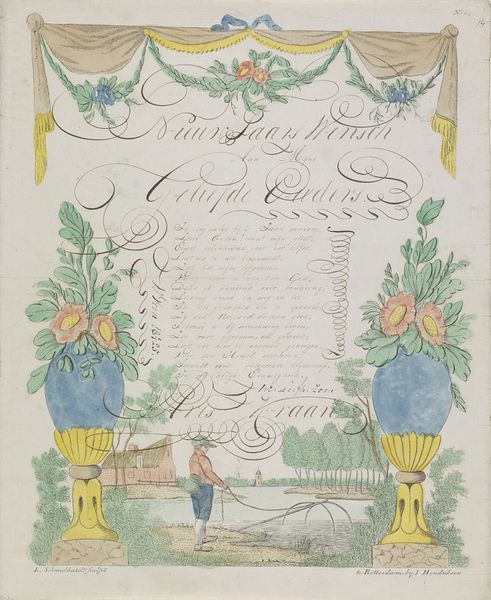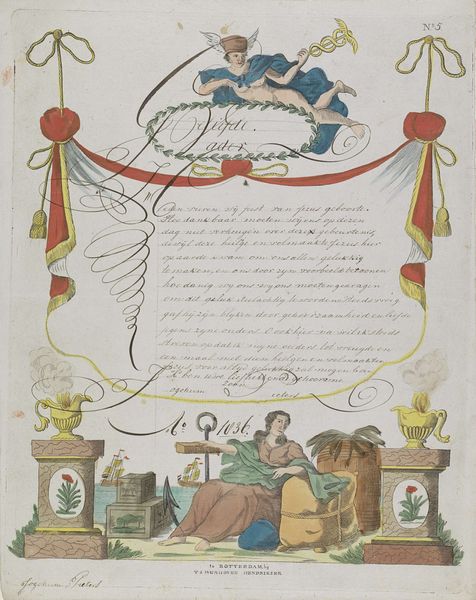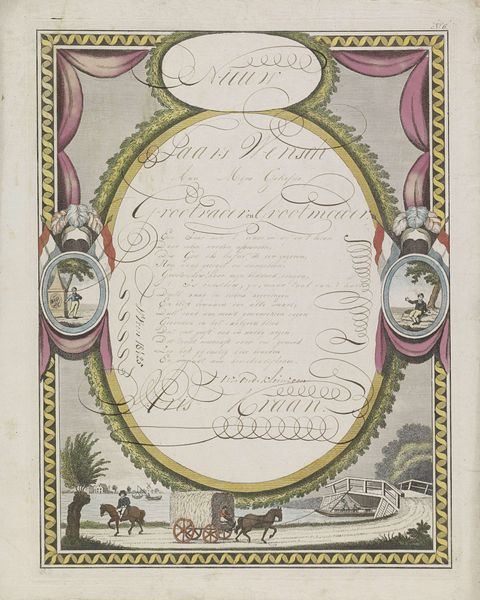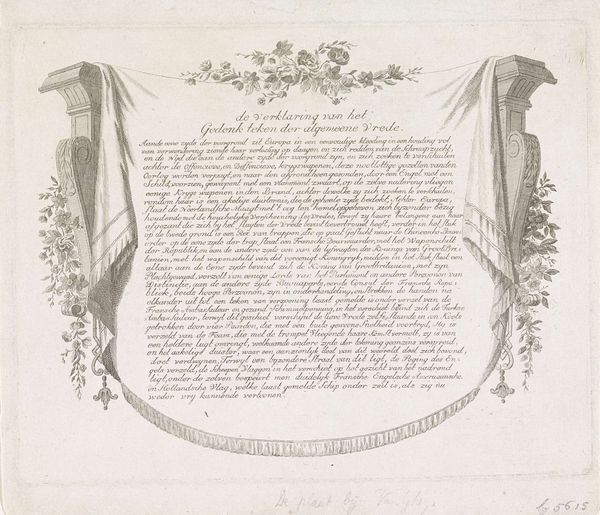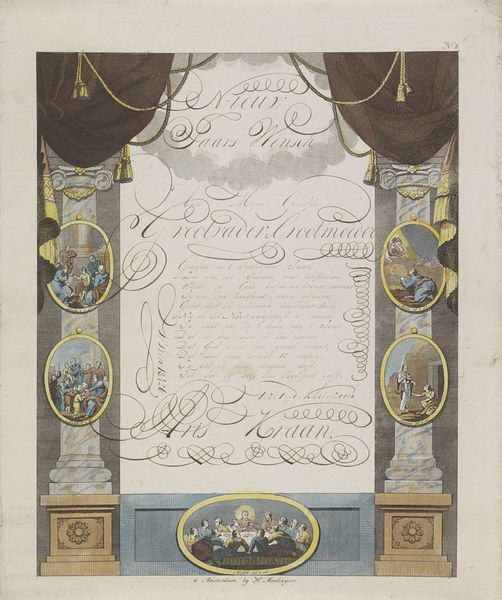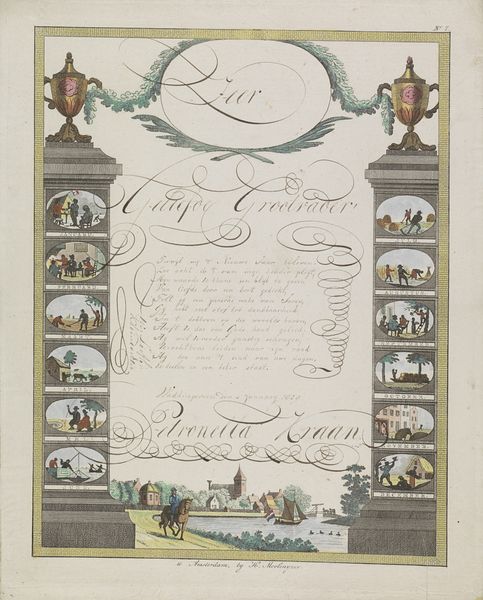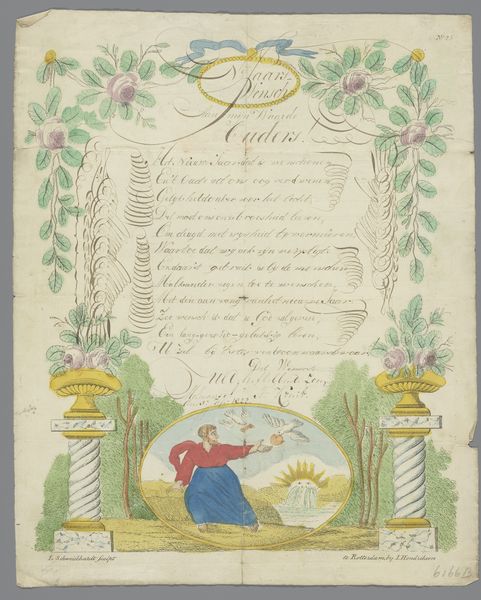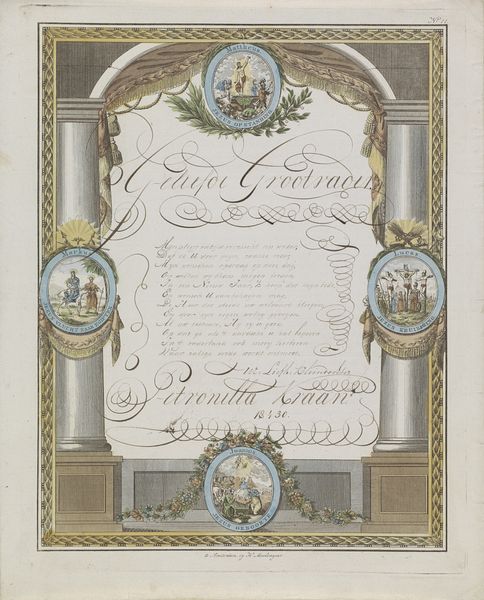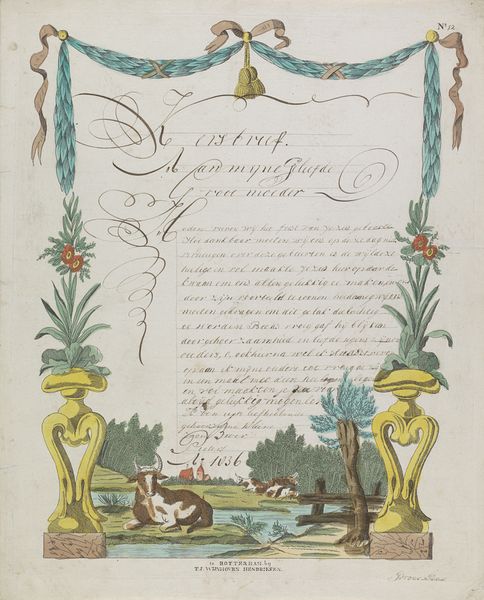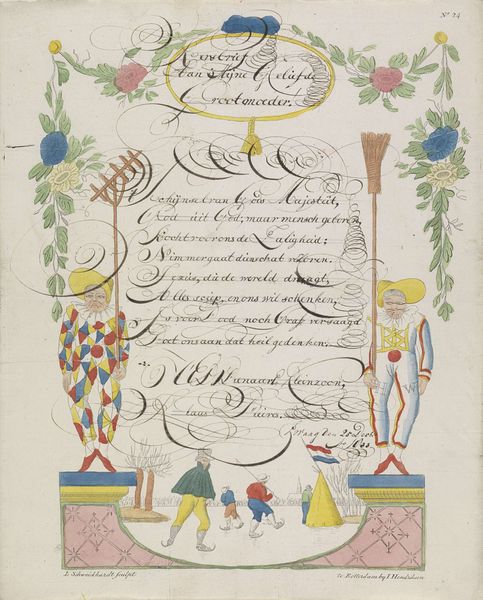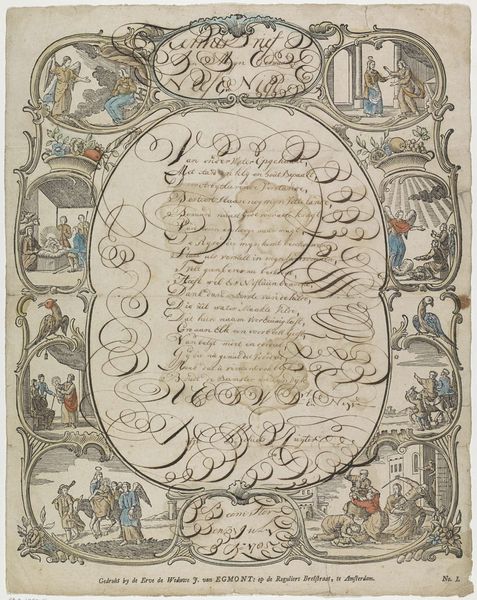
drawing, paper, watercolor
#
drawing
#
water colours
#
narrative-art
#
landscape
#
paper
#
watercolor
#
romanticism
#
watercolour illustration
#
watercolor
Dimensions: height 410 mm, width 324 mm
Copyright: Rijks Museum: Open Domain
Editor: This is a "Wensbrief met Elia gevoed door raven," or "New Year's Card with Elijah Fed by Ravens," created in 1813 by Leonardus Schweickhardt, using watercolors on paper. I’m struck by how delicately rendered everything is, yet the scene feels almost dreamlike, like a fleeting vision. What kind of stories and symbolism do you see playing out here? Curator: This image is saturated with potent symbols. Consider the figure of Elijah. He represents divine providence in times of scarcity, of trusting in a higher power for sustenance. The ravens, often viewed as ominous, become agents of divine grace, delivering life-sustaining food. This challenges our pre-conceived notions, doesn't it? Editor: It really does. The ravens almost seem like doves here. Curator: Precisely! Schweickhardt cleverly plays with expectations. This is a 'wensbrief,' a New Year's greeting, which traditionally focuses on themes of hope and renewal. Think about it – the artist combines the somber tale of isolation with a promise of divine care. Notice the rising sun – it is also symbolic, pointing towards an optimistic beginning. Editor: So, the card isn't just a simple greeting. It's layered with deeper meanings. The landscape itself also seems important here. Curator: Yes, the wilderness setting underscores Elijah's isolation and dependence on faith. But consider, too, how landscapes, in Romanticism, become mirrors of the soul. The setting then enhances the spiritual tone of the message. Is there a personal reflection the recipient may feel, through this? Editor: It sounds like this image contains a potent message that goes beyond just ‘Happy New Year’. It is rich with imagery reflecting hope. Curator: Indeed. And the subversion of familiar symbols transforms this seemingly simple greeting into a powerful statement about faith, resilience, and the ever-present possibility of renewal.
Comments
No comments
Be the first to comment and join the conversation on the ultimate creative platform.
